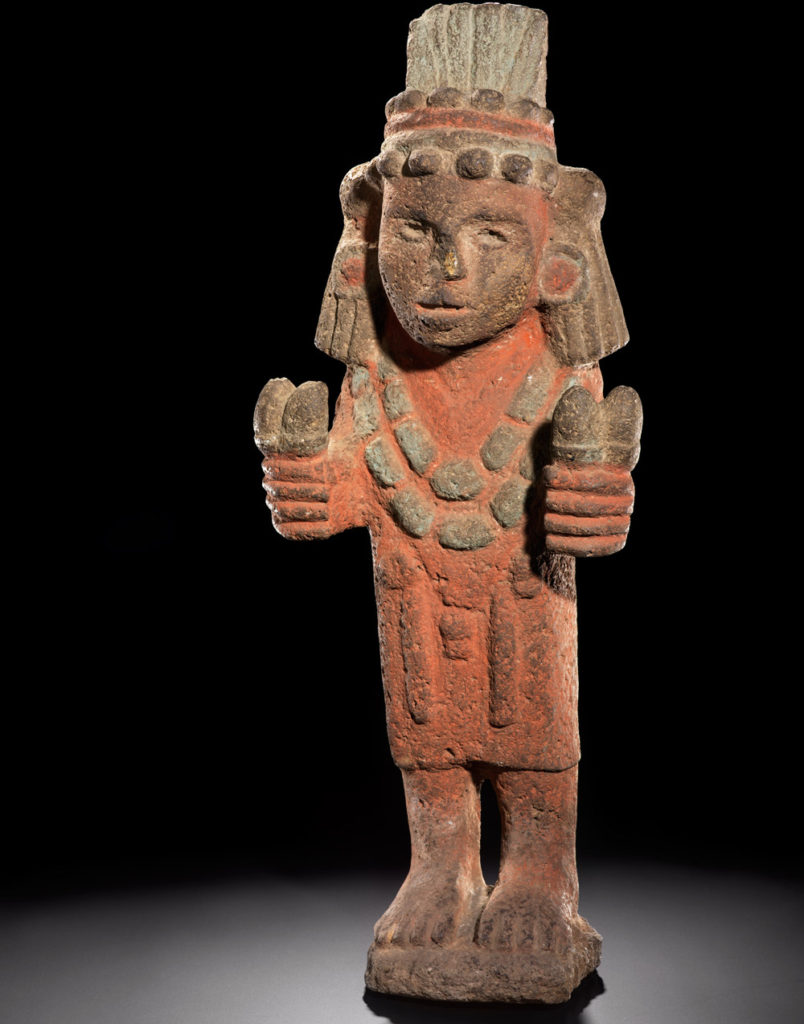
Mexica Chicomecoatl (seven snakes), the maize goddess. Mexico, c. 1325 – 1521 CE. Originally found in Infinity of Nations: Art and History in the Collections of the National Museum of the American Indian. Smithsonian Institution.
The Aztecs are famous for the human sacrifices . . . and those included girls.
Every autumnal equinox, a young girl was chosen to personify the maize goddess. She was sacrificed by the Mexica priests, who decapitated her, collected her blood, and poured it over a figurine of the goddess. This object is the maize goddess, called Chicomecoatl, and was likely used in such ceremonies. She is the spirit of corn and sustenance, and was the most revered deity in Central Mexico. Chicomecoatl wears a feathered headdress, and her body and clothing are painted red – or, perhaps, stained with the blood of those sacrificed to her.
We know about the sacrifices because we’ve found many depictions in art, as well as mummies from the Aztec’s neighbors, the Inca. In 1991, three frozen mummies of children were found in a shrine near the summit of the Argentinian volcano Llullaillaco. Samples from the children showed they regularly consumed coca leaves (from which cocaine is derived) and alcoholic beverages, though the oldest – dubbed the “Maiden” – consumed more. It’s believed the children were fed these drugs to make them more compliant in ritual sacrifice.
The Maiden in particular seems to have become an important figure just before her death. By analyzing her hair samples, archaeologists found that she was originally a peasant (because she ate mostly vegetables), but that in the year before her death she began eating “elite” food like maize and llama meat. She also consumed large amounts of coca and alcohol for the 21 months before her death. She was found to have a coca quid in between her teeth, which she would have chewed in order to be sedated during her death.
Was the Maiden also a sacrifice to Chicomecoatl? It’s quite possible, since maize was the primary crop in Central and South America. Taken together, the mummy and this statue of Chicomecoatl tell us of a harsh world for girls just before the Spanish conquest of the Americas. It was one where reaching adulthood wasn’t a certainty – but glory could be found in being the ultimate sacrifice for her people.
-Tiffany Rhoades
Program Developer
Girl Museum Inc.
This post is part of our 52 Objects in the History of Girlhood exhibition. Each week during 2017, we explore a historical object and its relation to girls’ history. Stay tuned to discover the incredible history of girls, and be sure to visit the complete exhibition to discover the integral role girls have played since the dawn of time.
